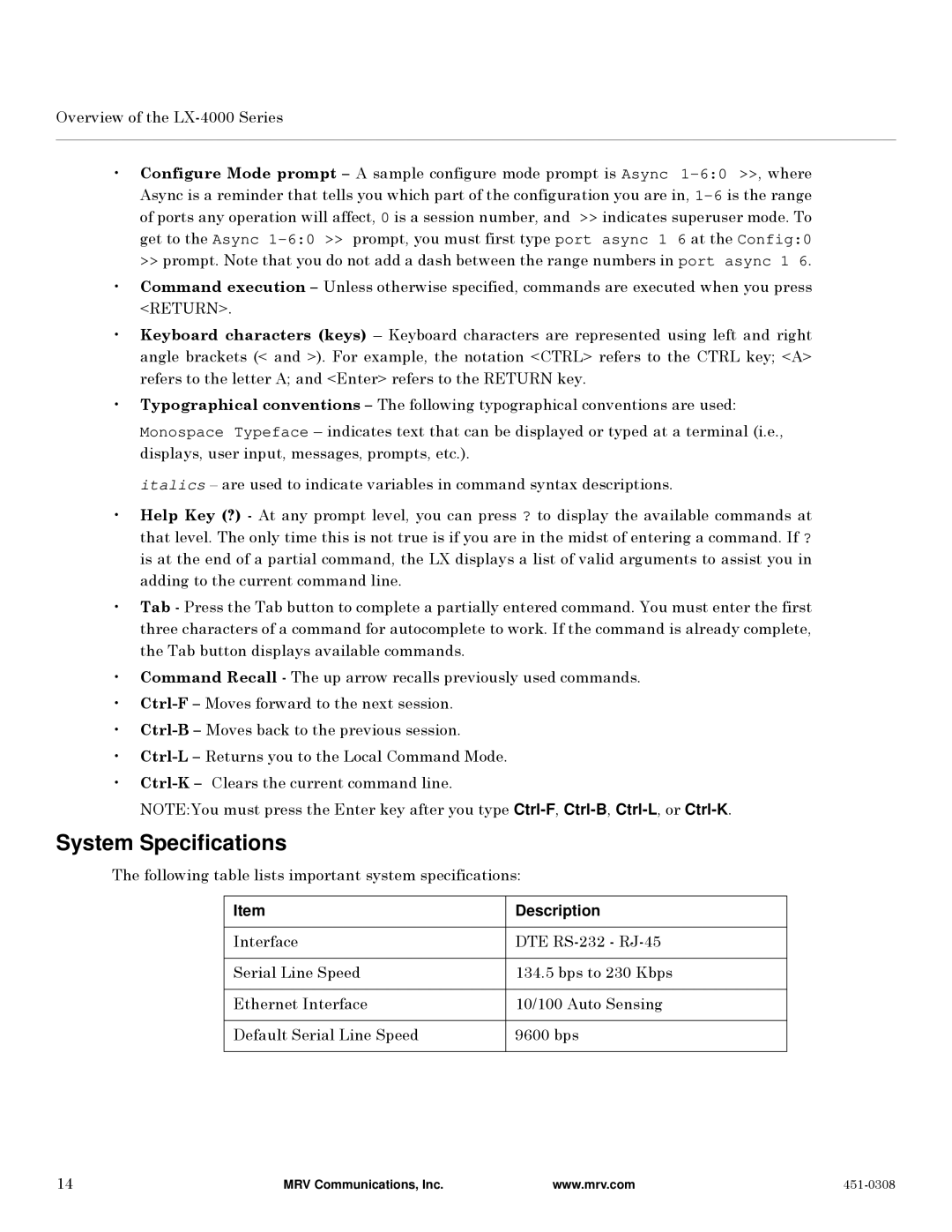Overview of the
•Configure Mode prompt – A sample configure mode prompt is Async
•Command execution – Unless otherwise specified, commands are executed when you press <RETURN>.
•Keyboard characters (keys) – Keyboard characters are represented using left and right angle brackets (< and >). For example, the notation <CTRL> refers to the CTRL key; <A> refers to the letter A; and <Enter> refers to the RETURN key.
•Typographical conventions – The following typographical conventions are used:
Monospace Typeface – indicates text that can be displayed or typed at a terminal (i.e., displays, user input, messages, prompts, etc.).
italics – are used to indicate variables in command syntax descriptions.
•Help Key (?) - At any prompt level, you can press ? to display the available commands at that level. The only time this is not true is if you are in the midst of entering a command. If ? is at the end of a partial command, the LX displays a list of valid arguments to assist you in adding to the current command line.
•Tab - Press the Tab button to complete a partially entered command. You must enter the first three characters of a command for autocomplete to work. If the command is already complete, the Tab button displays available commands.
•Command Recall - The up arrow recalls previously used commands.
•
•
•
•
NOTE:You must press the Enter key after you type
System Specifications
The following table lists important system specifications:
Item | Description |
|
|
Interface | DTE |
|
|
Serial Line Speed | 134.5 bps to 230 Kbps |
|
|
Ethernet Interface | 10/100 Auto Sensing |
|
|
Default Serial Line Speed | 9600 bps |
|
|
14 | MRV Communications, Inc. | www.mrv.com |
|
